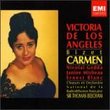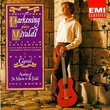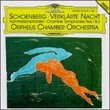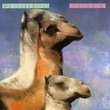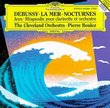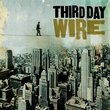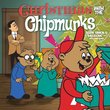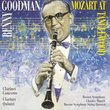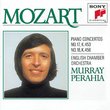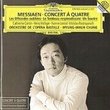| All Artists: John Adams, Simon Rattle, Jonathan Holland, Wesley Warren, City of Birmingham Symphony Orchestra Title: John Adams - Harmonielehre ˇ The Chairman Dances ˇ Tromba lontana ˇ Short Ride in a Fast Machine / Sir Simon Rattle Members Wishing: 0 Total Copies: 0 Label: EMI Classics Release Date: 4/12/1994 Genre: Classical Styles: Historical Periods, Modern, 20th, & 21st Century, Symphonies Number of Discs: 1 SwapaCD Credits: 1 UPCs: 724355505125, 724355505156 |
Search - John Adams, Simon Rattle, Jonathan Holland :: John Adams - Harmonielehre ˇ The Chairman Dances ˇ Tromba lontana ˇ Short Ride in a Fast Machine / Sir Simon Rattle
CD DetailsSimilar CDs
Similarly Requested CDs
|
CD ReviewsMinimalist paradise Brett A. Kniess | Madison, WI | 12/13/2005 (5 out of 5 stars) "Four great orchestral works by the American minimalist composer John Adams are showcased on this CD: Harmonielehre, The Chairman Dances, and Two Fanfares: Tromba Lontana and Short Ride in a Fast Machine. The title of the 40-minute Harmonielehre is based around the textbook written by the 12-tone serialist Arnold Schoenberg. While the strict world of dodecaphony never really evolved into popular circles, this minimalist work shows that the genre is willing to expand and evolve, incorporating new ideas and exploring new outlooks. The first movement of Harmonielehre starts out like we would expect; highly repetitive rhythms and slow harmonic rhythm with slight changes of meter and orchestral colors. The repetition creates a sort of mantra and the simplistic harmonic rhythm is the foil of dodecaphony. A long lugubrious melodic line shows up after the first 1/3 of the movement and is passed from voice to voice throughout the 17+ minutes. It is an outgoing and virile first movement that bristles with energy. The second movement, "The Anfortas Wound", uses some quasi-12 tone rows unusually enough, and really, the movement is evocative of pointillism rather than minimalism. A constantly shifting kaleidoscope of colors continue throughout, and a long sinuous melody wends its way from instrument to instrument. Minimalists never fear, the last movement, Meister Eckhardt and Quackie is a through and through description of John Adams' "sound". Starting in a high, ethereal tessitura, along with the help of various mallet instruments, piano, and harp, the piece expands into overlapping brass-like Doppler effects and a grand conclusion to an exhausting work. The parts are extremely virtuosic and require great stamina; for the listener too! The witty Chairman Dances: a foxtrot for orchestra is inspired by Adams' opera Nixon in China. Madame Mao crashes in on a Presidential party and she and Chairman Mao dance the foxtrot. The driving rhythms starts right off, but occasionally, the romanticism and soaring strings of the big band take over, almost as if a different piece has started. Nearly cinematic in parts, the tongue-in-cheek Hollywood portrayal is duly noted. All ends quietly with expansive requirements for percussion, including the ending sandpaper blocks. The two fanfares include the more lyrical and almost mystical Tromba Lontana. The echoing trumpets between searing strings create an ethereal atmosphere. The famous Short Ride in a Fast Machine is an athletic piece opening with unrelenting flourishes, woodblock, and the superb brass finale. It is a standard for orchestral, nonetheless, minimalist literature. The British performers, Sir Simon Rattle and the City of Birmingham Symphony Orchestra, excel in these pieces. No holding back for these musicians, it is all energy, with a clear and clean execution, and the works on this disk sparkle. This CD has all of the standard Adams repertoire, and it is nice to have it all on one disk with an outstanding performance. While this is a great introduction to John Adams, try the examples to make sure you like it first, it's not for everyone. Otherwise, this is THE CD to have of Adams' most popular and important works." So satisfying... A Seeker of Wisdom | Los Angeles, CA | 12/24/2004 (5 out of 5 stars) "I wish there were more than 5 stars to rate this magnificent rendering of "Harmonielehre" (literally meaning "harmony lesson") which, in complete agreement with a couple other reviewers, is definitely worth the price of admission. As a musician, I listen to many things, not the least of which is the quality of a recording. The CBSO's version under the gifted baton of Sir Simon Rattle is soul-satisfyingly clean and, considering the incredible complexity of the composition, amazingly tight. Sir Rattle weaves a rich texture with subtle decrescendos in the midst of slow-but-thrillingly-sure crescendos that caused my hair to stand up and gooseflesh to appear...thus the word "satisfying" just fits all the way through. I can't for the life of me understand how anyone could view Adams' work as "repetitive"...every note and rhythmic pattern he has written here, it seems to me, fall much more into the category of "sequential," which therefore makes it all function. Counting by the musicians in this brilliant work must be very challenging...I would love to see the score. Every instrument supports every other...all dancing together even in rhythmic contrasts to one another to form this extraordinary whole. I love the mixture of the repeated rhythmic passages followed by the sweepingly romantic...every style, every color in the musical palette is represented in this piece. I cannot recommend this work, and this recording, highly enough." For "Harmonielehre" alone this recording is priceless. Michael Thomas Jones | Huntington, WV | 06/22/2004 (5 out of 5 stars) "Back when I was a teen, I used to make compilation tapes of various radio stations at random. Somedays jazz or "world music" or sometimes classical. Well, one of the classical tapes I made had "Harmonielehre: Part III. Meister Eckhardt And Quackie" on it, but I never knew who it was, other than a "minimalist" of some stripe. All that I knew was its crescendo ending struck me as one of the most transcendent pieces of music I had ever heard, or, to speak more mystically (forgive me), it was the sound I heard in my dreams, the archetypal sound of my inner life or something approximate. For around 15 years, after becoming acquainted with Reich, Glass, even Arvo Part, I never knew who it was until I checked out this recording from my local library by chance. Finally and gloriously, I felt like I was reunited with a lost relative--that's how important this work is to me. Now that I own it, I am always blown away by it. For "Harmonielehre" alone this recording is priceless."
|

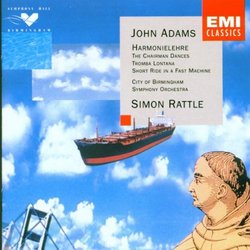
 Track Listings (6) - Disc #1
Track Listings (6) - Disc #1